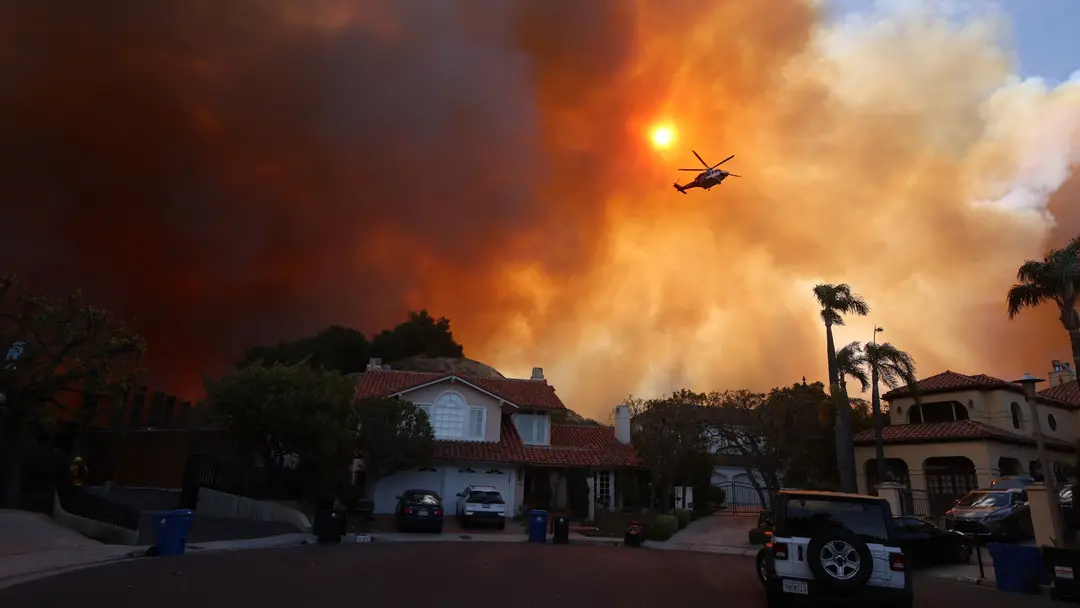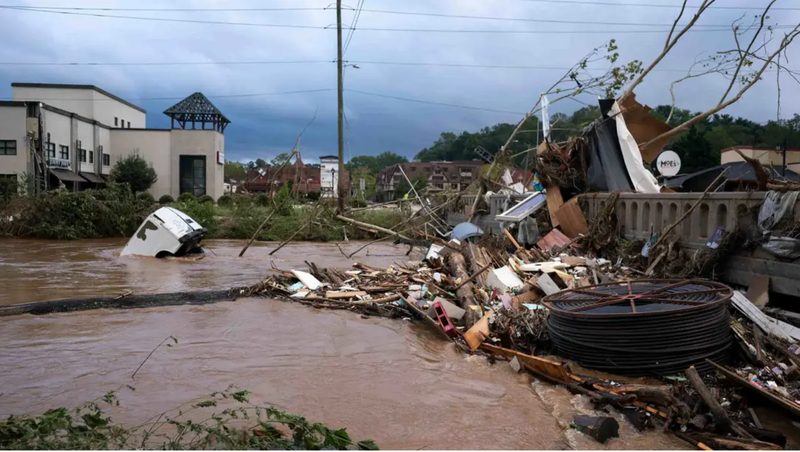Los Angeles: Wildfires Kill at Least 2, Over 80K Evacuated
At least two people have died and over 80K have been evacuated as several wildfires continued to burn in the Los Angeles area on Wednesday.
Facts
- At least two people have died and over 80K have been evacuated as several wildfires continued to burn in the Los Angeles area on Wednesday.[1][2]
- Firefighters are contending with five blazes — the Palisades, Eaton, Hurst, Woodley, and Tyler fires — with the first one breaking out southeast of Palisades Drive on Tuesday morning.[1][3]
- As of Wednesday afternoon, the Palisades and Eaton fires had each burned over 10K acres, and the Hurst fire had destroyed over 500 acres. Helicopters returned to the skies after being grounded earlier due to high winds.[4][5][6]
- California Gov. Gavin Newsom has declared a state of emergency, with more than 1K structures already destroyed and a further 28K at risk.[7][8][9]
- Over 1.4K firefighters and other officials have been deployed, with some service members reporting a drop in water supply. Addressing these concerns, the Department of Water and Power said it's working to "ensure the availability of water supplies."[10]
- Over 300K people faced power outages on Wednesday, with warnings that this could extend to a further 440K customers.[11]
Sources: [1]CNN, [2]NBC (a), [3]NBC (b), [4]Eaton Fire, [5]Hurst Fire, [6]CBS (a), [7]New York Post, [8]CBS (b), [9]Associated Press (a), [10]Hindustan Times and [11]Associated Press (b).
Narratives
- Narrative A, as provided by US EPA and World Meteorological Organization. The unprecedented scale and timing of these wildfires highlights the escalating impact of climate change on California's fire seasons. Data shows that all 10 of the largest acreage burns have occurred since 2004, coinciding with record-breaking temperatures. Given that there has been little progress in curbing the consumption of fossil fuels, wildfires will only grow more frequent and severe.
- Narrative B, as provided by The New York Times and NBC. Climate change is being misused to promote alarmist narratives and political agendas. Los Angeles' fire emergency has stemmed primarily from natural weather patterns, specifically the seasonal Santa Ana winds, which have historically caused similar dangerous conditions in Southern California. The current situation reflects typical winter wind patterns rather than long-term climate trends.
- Narrative C, as provided by Science. Neither climate change nor natural weather patterns are to blame for the increased risk of raging fires — poor federal regulation and forest management practices are the real culprits. Blaming California's wildfires on external factors is an easy way out when most wildfires are started by humans. It's crucial to develop practical solutions and focus on fixing policies rather than getting swept up in alarmist or denialist hype.







